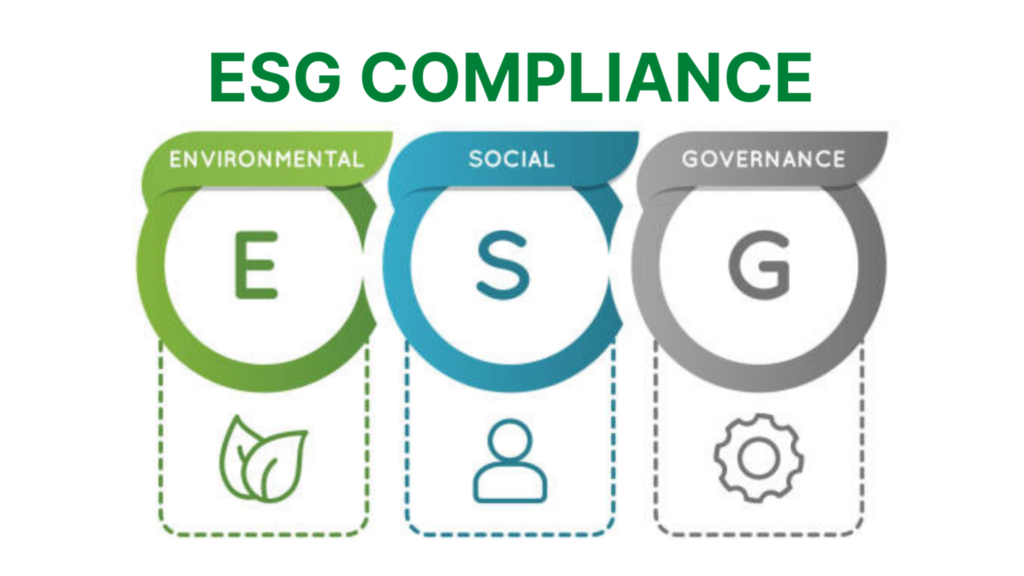
Environmental Social and Governance Compliance and Reporting

Introduction
In an age where corporate responsibility is paramount, organizations face increasing scrutiny to align with Environmental Social, and Governance (ESG) principles. The drive towards sustainable and ethical business practices has intensified, influenced by growing awareness among stakeholders, regulatory pressures, and the urgent need to address global challenges like climate change and social inequality. This whitepaper explores the obstacles companies encounter in managing and reporting on their ESG performance and presents robust solutions to meet these challenges.
The push for ESG compliance represents a fundamental shift in how businesses operate, requiring them to consider their impact on the environment, society, and governance structures. Companies must navigate a complex landscape of evolving standards, stakeholder expectations, and operational hurdles to integrate ESG principles effectively. This whitepaper provides a roadmap to understanding these challenges and outlines practical solutions for enhancing ESG performance and reporting.
Challenges in ESG Compliance
Standardization Gap
A primary hurdle in Environmental Social and Governance Compliance is the lack of standardized metrics and reporting frameworks. The absence of universally accepted standards complicates the ESG landscape, with various guidelines from entities like the Global Reporting Initiative (GRI), Sustainability Accounting Standards Board (SASB), and others leading to a fragmented reporting environment. Companies grapple with navigating these diverse guidelines, resulting in inconsistent reporting methods and complicating stakeholder comparisons. This lack of standardization not only creates confusion but also undermines the credibility of ESG reports, making it difficult for stakeholders to assess and compare performance across different organizations.
Complex Carbon Footprint Tracking
Precise carbon footprint tracking proves challenging due to the intricate nature of emissions sources within a company’s value chain. Many organizations struggle to accurately identify and quantify carbon emissions, hindering the establishment of meaningful reduction targets. This complexity is amplified in industries with extensive supply chains, where emissions occur at multiple levels, including direct operations, suppliers, and even product end-use by consumers.
Limited Visibility into Sustainable Sourcing
Tracking and verifying sustainable supply chain practices pose significant challenges. Limited visibility into sourcing practices impedes informed decisions regarding sustainable procurement, exposing companies to reputational and operational risks. Ensuring that suppliers adhere to ethical and environmental standards requires robust monitoring and verification mechanisms, which are often lacking in traditional supply chain management systems.
Incomplete Social Impact Measurement
Traditional tools fall short in capturing the holistic social impact of a company. Incomplete and inaccurate reporting is a common issue, as measuring social impact demands a nuanced understanding beyond financial metrics. Social impact encompasses a wide range of factors, including community engagement, employee well-being, diversity and inclusion, and human rights, each requiring different measurement approaches and indicators.
Integration Challenges with Risk Management
Efficient integration of ESG factors into existing risk management processes proves challenging for many companies. This results in missed opportunities to identify and mitigate emerging risks and incorporate ESG considerations into strategic decision-making. ESG risks often intersect with traditional business risks, such as regulatory compliance, operational efficiency, and reputation, necessitating a comprehensive approach to risk management.
Solutions for Effective ESG Management
Standardization and Guideline Adherence
Our ESG compliance solutions prioritize metric standardization and adherence to recognized reporting frameworks such as the Global Reporting Initiative (GRI) and Sustainability Accounting Standards Board (SASB). This ensures consistency and comparability in reporting, enabling stakeholders to assess ESG performance reliably. By aligning reporting practices with established standards, companies can enhance the credibility and transparency of their ESG disclosures, facilitating more meaningful comparisons and evaluations by investors, regulators, and other stakeholders.
Streamlined Carbon Footprint Tracking
Our platform provides a user-friendly interface for tracking and managing carbon footprints. Utilizing advanced analytics and machine learning algorithms, companies can identify emission hotspots, set realistic reduction targets, and monitor progress effectively. This approach simplifies the complex process of carbon accounting, enabling organizations to gain a clear understanding of their carbon emissions across various operations and value chain stages.
Transparent Sustainable Sourcing
Our solution offers real-time visibility into supply chain sustainability. Companies can track and verify suppliers’ adherence to ethical and environmental standards, facilitating informed decisions aligned with a commitment to sustainable practices. This transparency helps mitigate risks associated with unethical practices in the supply chain and enhances the company’s ability to source responsibly.
Comprehensive Social Impact Measurement
Going beyond traditional metrics, our tools provide a holistic approach to social impact measurement. This allows organizations to capture both qualitative and quantitative aspects of their contributions to communities for a more accurate representation. By integrating social impact into ESG reporting, companies can demonstrate their commitment to broader societal goals and provide a more complete picture of their performance.
Seamless Integration with Risk Management
Our platform facilitates the seamless integration of ESG considerations into risk management processes. By identifying and assessing ESG-related risks, companies can ensure these factors are incorporated into strategic decision-making, enhancing resilience and long-term sustainability. This integration helps companies anticipate and mitigate potential risks associated with ESG factors, such as regulatory changes, environmental impacts, and social issues, and align their risk management strategies with their ESG objectives.
Case Studies
Manufacturing Industry
A global manufacturing company faced significant challenges in tracking and reducing its carbon footprint across multiple production facilities. By implementing our carbon tracking platform, the company was able to streamline data collection from various sources, analyze emissions patterns, and set targeted reduction goals. This led to a 15% reduction in overall emissions within the first year of implementation, demonstrating the effectiveness of our solutions in achieving tangible results.
Retail Sector
A major retailer sought to enhance the sustainability of its supply chain by improving visibility into sourcing practices. Our supply chain transparency tools enabled the retailer to track supplier compliance with ethical and environmental standards in real-time, leading to more informed sourcing decisions and a 20% improvement in supplier adherence to sustainability criteria. This not only reduced risks but also strengthened the retailer’s reputation for responsible sourcing.
Financial Services
A financial services firm aimed to integrate ESG factors into its risk management processes to better align with investor expectations and regulatory requirements. Using our ESG integration platform, the firm was able to identify and assess ESG-related risks, incorporate these insights into its risk management strategies, and enhance its overall resilience to emerging risks. This resulted in improved stakeholder confidence and a stronger alignment with long-term sustainability goals.
Conclusion
In navigating the dynamic landscape of ESG compliance and reporting, our solutions empower organizations to surmount challenges and embrace responsible business practices. Providing a user-friendly platform that addresses the intricacies of ESG management, we enable companies not only to meet regulatory requirements but also to positively contribute to the planet and society. Embrace the future of sustainable business with our comprehensive ESG solutions.
- Environmental Social and Governance Compliance and Reporting
- Introduction
- Challenges in ESG Compliance
- Standardization Gap
- Complex Carbon Footprint Tracking
- Limited Visibility into Sustainable Sourcing
- Incomplete Social Impact Measurement
- Integration Challenges with Risk Management
- Solutions for Effective ESG Management
- Standardization and Guideline Adherence
- Streamlined Carbon Footprint Tracking
- Transparent Sustainable Sourcing
- Comprehensive Social Impact Measurement
- Seamless Integration with Risk Management
- Case Studies
- Manufacturing Industry
- Retail Sector
- Financial Services
- Conclusion
Leave a Reply
You May Also Like

April 09, 2024
Unveiling the Future: Mastering G
Mastering GRC in the Cloud Revolution :In the ever-evolving landscape of technological innovat...
Read More
April 09, 2024
6 Best Strategies for Effective R
Effective Risk ManagementIn today's rapidly evolving digital landscape, businesses are increas...
Read More
April 09, 2024
Crisis Management: Preparing for
Crisis Management Preparing for and Responding :Crisis situations can occur at any time, an...
Read More
April 09, 2024
Vendor Management: Mitigating Ris
Vendor Management :Companies today rely on third-party vendors and suppliers for a wide rang...
Read More
April 09, 2024
Demystifying GRC in the Cloud Era
Demystifying GRC in the Cloud Era :In today's rapidly evolving business landscape, organ...
Read More
April 09, 2024
Navigating GRC Excellence in the
Navigating GRC Excellence :In an era where businesses are rapidly adopting cloud technolo...
Read MoreGET STARTED NOW